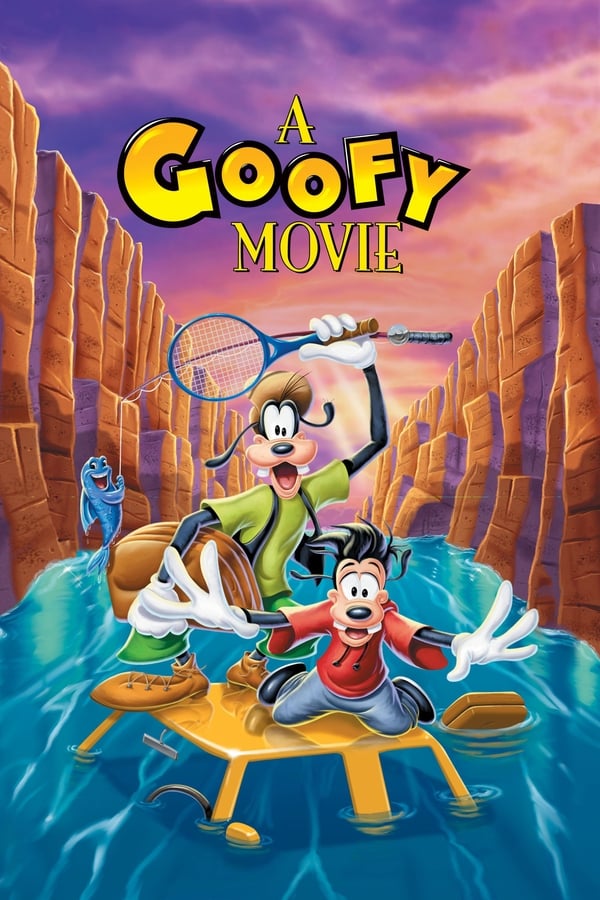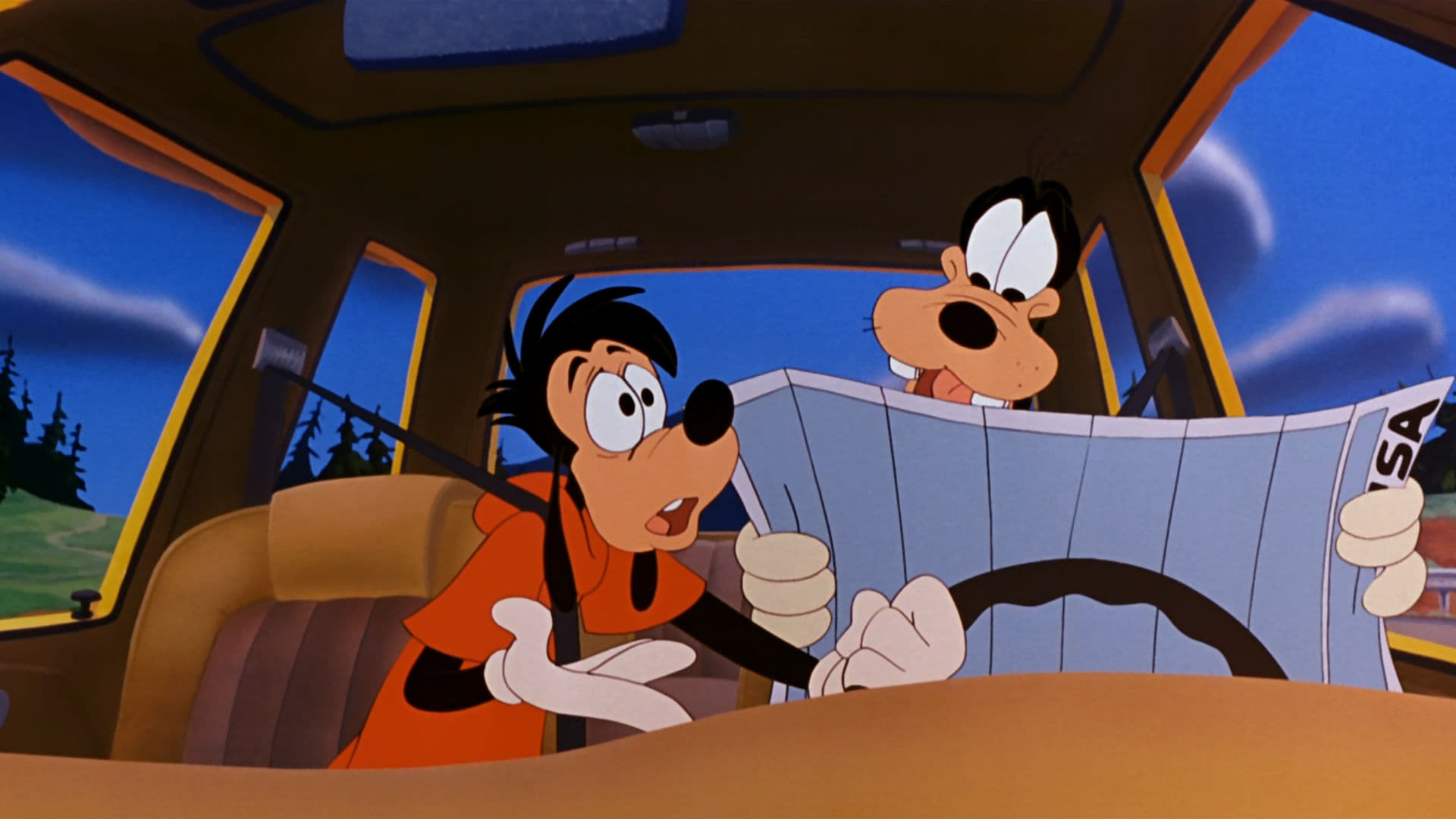For many of us, thinking about the animated world brings up warm memories, and one particular film often stands out as a genuine surprise: A Goofy Movie. This picture, which first came out years ago, has somehow managed to hold onto a very special spot in the hearts of so many people, even after all this time. It's almost as if its charm just keeps growing, pulling in new watchers while keeping its original fans completely hooked.
It’s not just a cartoon; it’s a story that, you know, really gets into the everyday ups and downs of growing up and what it means to be a parent. This particular Disney creation, in a way, broke away from some of the usual fairy tale stuff we were used to, offering something that felt a little more grounded and, well, real. It's a pretty interesting piece of work when you stop to consider it.
From its catchy tunes that you can’t help but hum to the very real feelings it explores, this film has layers that people are still talking about. We're going to take a look at some of the lesser-known bits and pieces that make this picture such a lasting favorite, some things you might not have, like, picked up on before. It's a pretty fascinating peek behind the curtain, actually.
Table of Contents
- Pauly Shore, A Goofy Movie, and the Uncredited Role
- Who Upgraded The Goofy Movie to 4K, and Why It Matters?
- What Does The Goofy Movie Say About Single Parenting?
- Why Does The Goofy Movie Feel a Little Dated Now?
- The Voice of Goofy and Jeffrey Katzenberg's Request for The Goofy Movie
- Max and Roxanne: Where Do They End Up in The Goofy Movie?
- Powerline, The Goofy Movie, and His Musical Inspirations
- The Goofy Movie and Its Surprising Origins
Pauly Shore, A Goofy Movie, and the Uncredited Role
It's kind of a neat bit of trivia that Pauly Shore, the person who gave life to Bobby Zimuruski, actually asked for his name not to appear in the film's credits. This choice, you know, is pretty similar to what Robin Williams did when he voiced the Genie in Aladdin many years ago. Shore, it seems, just didn't want Disney to use his name as the main selling point for the picture. He preferred, in a way, for the movie to stand on its own merits rather than leaning on his personal brand. It's a pretty unique stance for someone who had a recognizable public presence at the time. This decision really shows a certain kind of thinking about how movies are put out there and how, like, names can sometimes overshadow the actual work. It’s a subtle but interesting detail in the story of A Goofy Movie, making you wonder about the bigger picture of creative control and marketing in the film world. It’s almost as if he wanted the audience to just experience the character without any outside expectations.
Who Upgraded The Goofy Movie to 4K, and Why It Matters?
There's a person out there, a truly dedicated fan, who spent years and years working on making A Goofy Movie look absolutely stunning in 4K HDR10, complete with 5.1 sound. Think about that for a second: they went through over a thousand individual frames, cleaning each one with painstaking care. We're talking about hundreds of little fixes applied to every single frame to make it look just right. This isn't something a big studio did; this was, like, a labor of love from someone who really, really cared about the film. This kind of dedication really shows how much this particular picture means to its audience. It highlights, in a way, the deep connection people feel to the story and its characters, so much so that they're willing to put in countless hours to make it even better for others. It's a testament to the enduring appeal of A Goofy Movie and the power of fan communities to preserve and even improve the art they cherish. It’s pretty incredible when you think about the amount of work involved, actually.
What Does The Goofy Movie Say About Single Parenting?
At the very beginning of A Goofy Movie, we find Max pretty close to finishing up high school, and Goofy, as many people know, is raising him all by himself. So, a good part of the film, in some respects, serves as a kind of look at what it's like to be a single parent, especially when you have just one child. It really explores the unique challenges and, you know, the special bond that can form in such a family setup. The movie shows Goofy trying his best to connect with Max, who is, like, growing up and trying to find his own way. It touches on the difficulties of communicating across generations and the desire of a parent to guide their child, even when that child might want to go in a different direction. It’s a pretty honest portrayal of family life, making it relatable for many who have experienced similar situations. This aspect of A Goofy Movie gives it a depth that goes beyond just a fun road trip story, making it, in a way, a quiet commentary on family dynamics.
Why Does The Goofy Movie Feel a Little Dated Now?
Some people might say that A Goofy Movie feels a bit old-fashioned these days, and there's a pretty simple reason for that. It’s mainly because Goofy, the parent in the story, actually has a lot of time to spend with Max. Think about it: they go on a whole road trip together. In today's busy world, where parents often have very full schedules, the idea of a single parent having that much free time for such an extended adventure might seem, you know, a little out of touch. It's almost as if the pace of life shown in the film doesn't quite match the hurried existence many families experience now. This isn't to say the movie isn't still great, but it does highlight how much things have changed in terms of how families manage their time and what's considered, like, a normal amount of free time for parents. It’s a subtle reminder of how society has shifted, making the film a kind of time capsule in that respect. It’s a very interesting point to consider, really.
The Voice of Goofy and Jeffrey Katzenberg's Request for The Goofy Movie
When the folks behind A Goofy Movie finally decided to stick with Bill Farmer as the voice of Goofy, Jeffrey Katzenberg, who was a pretty important person at Disney at the time, made a rather specific request. He apparently told Farmer to record Goofy's dialogue using his natural speaking voice, rather than the more exaggerated, well, "goofy" voice we often associate with the character. Katzenberg, it seems, thought that audiences might not, like, fully connect with the film if Goofy sounded too over-the-top all the time. He wanted a more grounded, relatable performance. This decision is pretty fascinating, you know, because it shows a desire to make Goofy feel more like a real parent, someone the audience could genuinely believe in as Max's dad. It was a creative choice meant to bring a bit more warmth and sincerity to the character, moving him slightly away from just being a comedic figure. It really shaped how Goofy came across in A Goofy Movie, giving him a bit more emotional depth, which is pretty important for the story they were trying to tell.
Max and Roxanne: Where Do They End Up in The Goofy Movie?
In the events that unfold during A Goofy Movie, Max and Roxanne do, in fact, end up together, which is a pretty sweet outcome for their budding relationship. And for those who pay very close attention to other Disney cartoons, there's a neat little detail to be found. If you happen to be watching DuckTales, you can actually catch a quick glimpse of both Max and Roxanne together. They're seemingly heading off to prom, which is, like, a fun little nod to their continued story beyond the big screen. It’s a subtle way for the creators to show that their connection lasted, giving fans a little extra piece of their narrative. This kind of cross-show appearance is pretty common in animation, but it feels especially meaningful for these two characters, confirming that their bond from A Goofy Movie was, you know, a real thing that kept going. It’s a nice touch that adds a bit more depth to their world, really, and gives a sense of closure to their romantic storyline.
Powerline, The Goofy Movie, and His Musical Inspirations
People often say that Powerline, the big pop star in A Goofy Movie, was meant to be a lot like Michael Jackson, and that general idea for the character's persona was certainly, like, part of the plan. However, when you look at most of the actual specific details and, more importantly, the musical inspiration for Powerline's songs, it becomes pretty clear that those elements were taken from other places too. It wasn't just one person or one style; it was a blend of different influences that came together to create his unique sound and stage presence. This mix of inspirations is pretty common in character design, allowing for a richer and more distinct creation. So, while the initial concept might have pointed to one famous musician, the final product for Powerline in A Goofy Movie was, in a way, a composite of various artists and musical trends, making him a truly original figure in the film's universe. It’s a very clever way they put him together, actually, to make him feel so real.
The Goofy Movie and Its Surprising Origins
It's a rather unsettling piece of history that Goofy, as a character, was originally made to be a pretty unfortunate and, frankly, racist stereotype. This is a very important thing to remember when we talk about his appearances, even in something as beloved as A Goofy Movie. So, even if the film was, like, intended for a specific audience, perhaps white skater kids at the time, there has been a significant movement to, you know, reclaim things that were first made to cause harm to certain groups of people. This effort involves taking these characters or stories and giving them new meaning, transforming them from symbols of negativity into something more positive or at least acknowledging their problematic past. It's a powerful idea, really, this act of reappropriation, and it speaks to the ongoing conversation about representation and history in popular culture. It's a reminder that even cherished films like A Goofy Movie have roots that are, in some respects, quite complex and need to be understood in their full context. It’s pretty eye-opening when you learn about it.


